Halfway through the decade, where are we from a population standpoint and growth hot spots? Looking at historical growth patterns, some of the recent phenomena of moving to places like Nashville don’t seem as shocking as it was made out to be during Covid. But what comes next? What are the next hot spots that people want to move to?
When we look at historical growth from 1970 to today, the rise of the west coast beginning in the 1970’s, followed by the well-known booms in Atlanta, Phoenix, Las Vegas, Charlotte, Orlando, and Nashville, all become crystal clear. Using level 5 of the H3 cartography, the maps below show absolute population change by cell over the period. All maps are on the same scale.
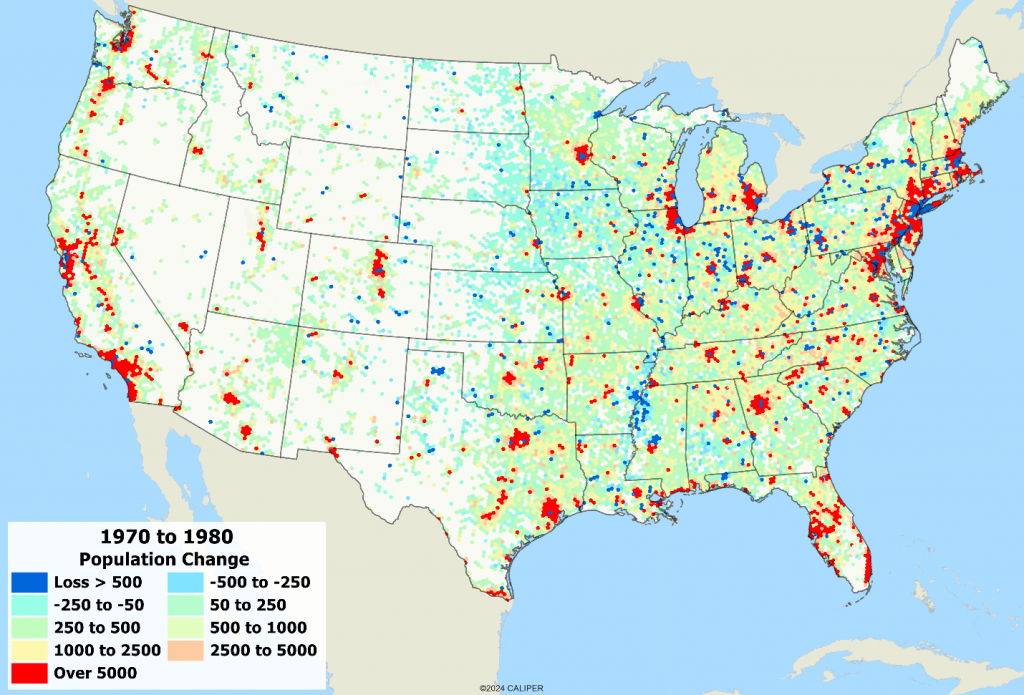
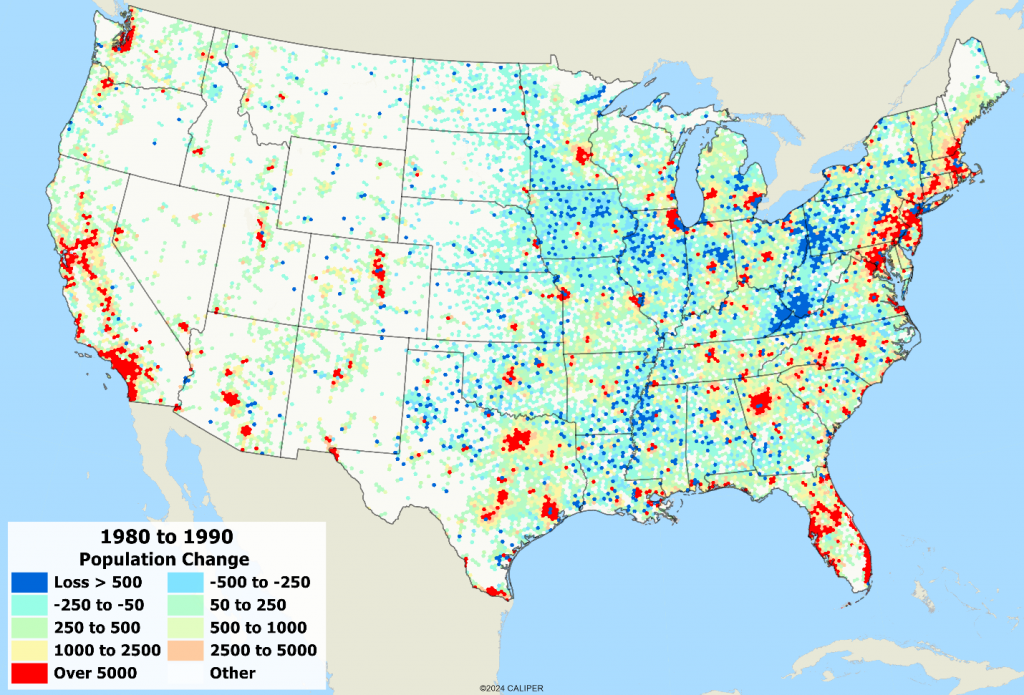
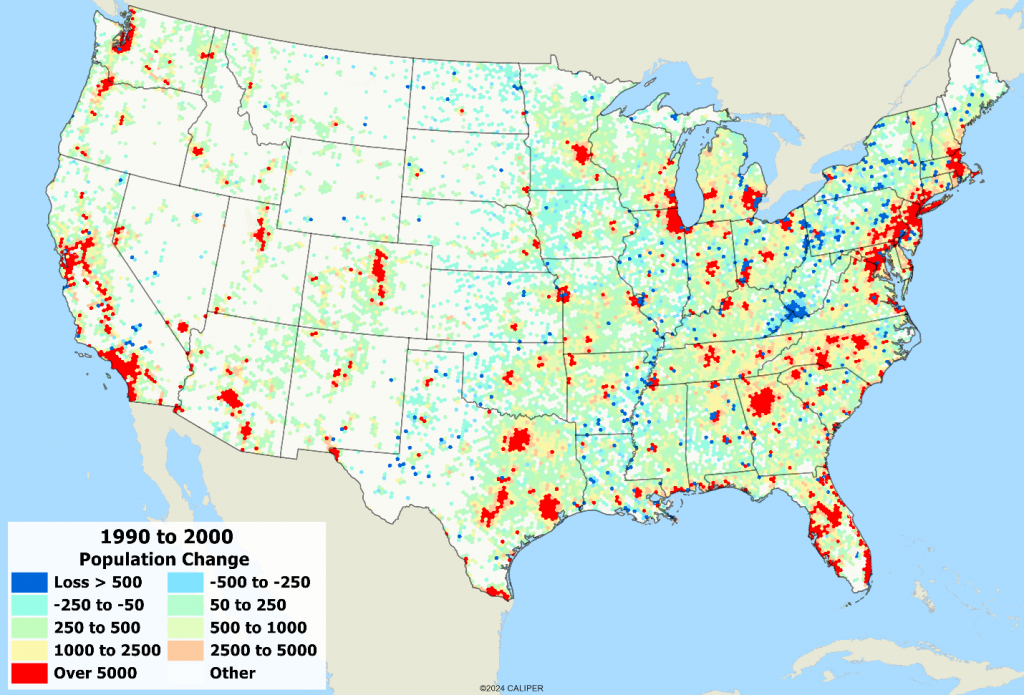
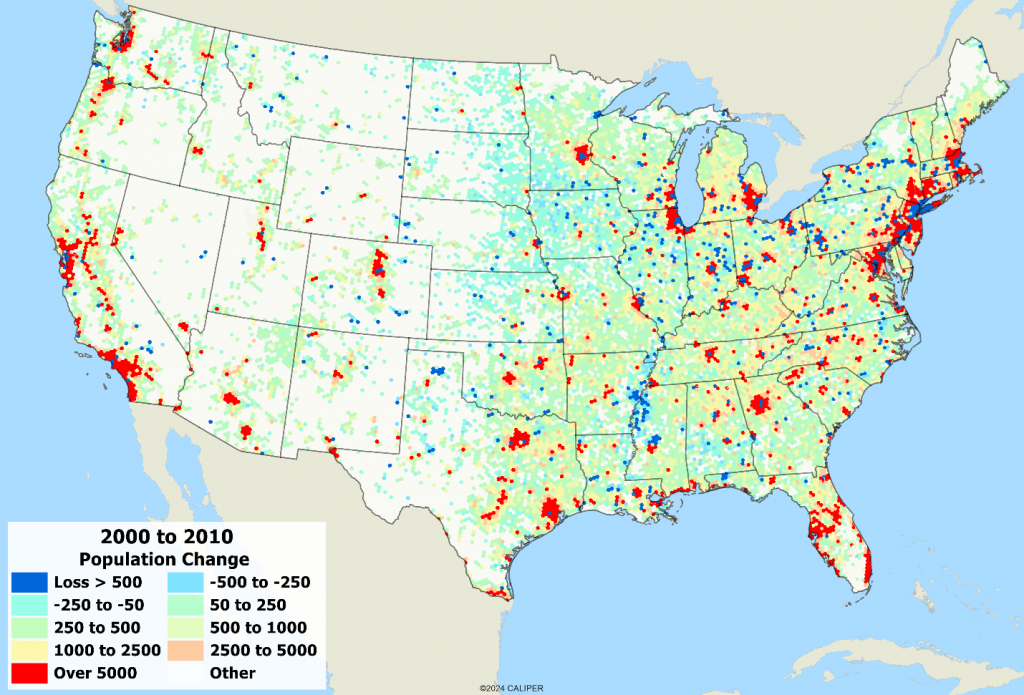
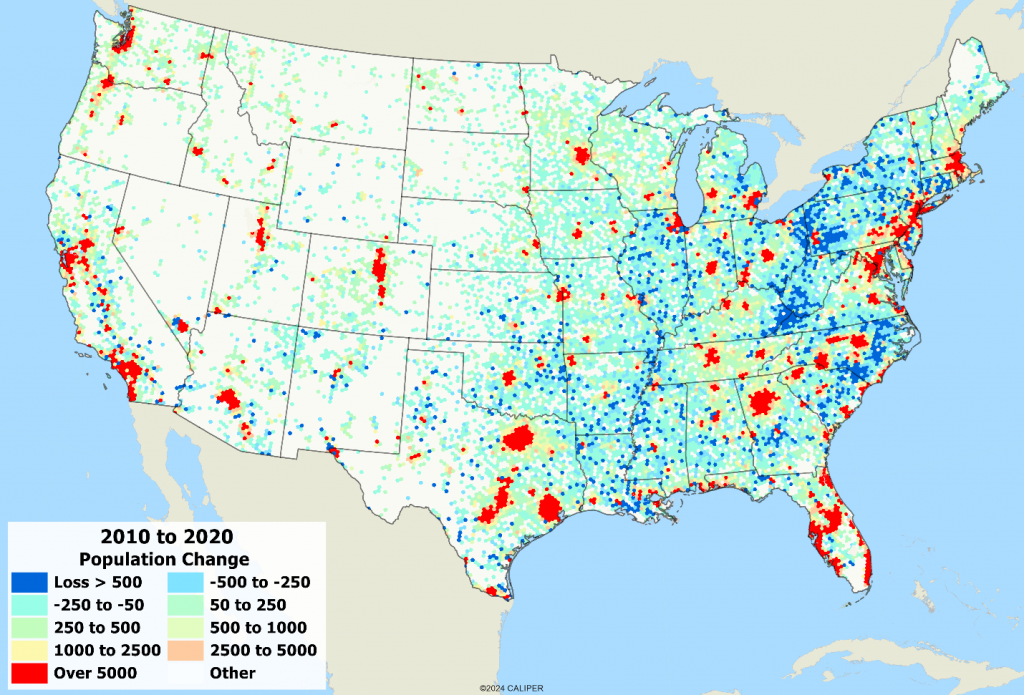
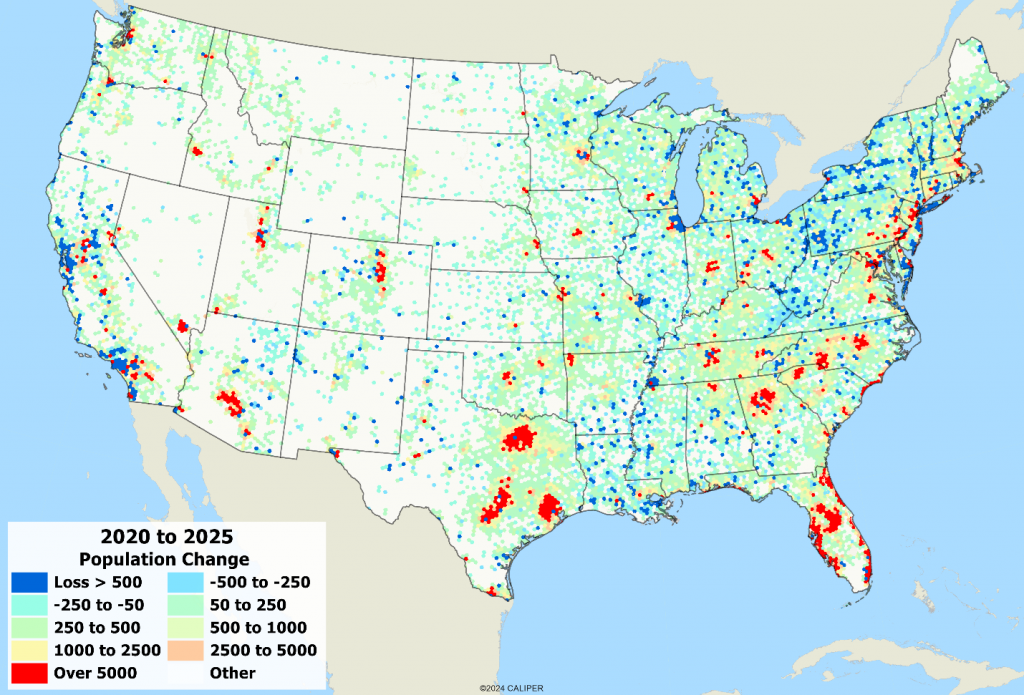
So, what comes next? In the last few years, we have seen some major changes – some COVID related, some due to cost of living and quality of life. A massive increase in people working from home has allowed many to migrate from congested urban areas. While this is now declining, the long term trend remains – working at home is expected to become more significant over the coming decades. Congestion, crime, and cost of living have put an end to decades of growth in the west, especially Los Angeles, San Francisco, San Diego, and Seattle, with residents leaving for inland cities from Tucson and Pheonix to Boise and Coeur d’Alene. Also, the continued appeal of Texas and Florida, and the rise of the new south bounded by Nashville, Atlanta, and Raleigh-Durham, has drawn in those looking to escape city lift. Although, growth appears to be slowing in the major urban areas of Florida, like Tampa, Orlando, and Miami.
So, what’s ahead? Much of the same, but growth in the Texas Five (Dallas, Fort Worth, Houston, San Antonio, and Austin) is increasingly in the outer suburbs as the core cities have all but stopped growing. Continued growth will occur in the mountain west from Coeur d’Alene, Idaho to Tucson, Arizona, but with much slower growth in Phoenix and Las Vegas proper. Growth along the gulf coast from Mobile to the Florida bend, and growth in the north central interior of Florida instead of the major cities. We predict rapid growth along the south Atlantic coast from Wilmington, North Carolina to Jacksonville, Florida, and continued growth in Tennessee, northern Alabama and Georgia, and along the Appalachian front of the Carolinas and Virginia.
There will be factors to watch that may influence our predictions. First, how aggressive will employers be in forcing their employees to come back to the office? Second, will the present administration’s push for drilling result in the renewed growth in places like Midland and Odessa TX, Tulsa OK, and in western North Dakota? Third, will the administration’s efforts at rebuilding manufacturing lead to the revival of smaller towns which have been long declining? Or revitalize some of the port cities which used to rely on building ships for the navy?
What will be interesting to watch is some mid-sized market poised for potential growth. With a move to smaller Florida cities, there will likely be growth along the gulf coast of Alabama towards Florida and the mid-Atlantic, from Jacksonville to Wilmington. Pending law changes, cities that have been traditionally oil and gas towns may have a resurgence. Other places to watch include Northwest Arkansas (Bentonville, Fayetteville, Rogers), North Alabama (Huntsville, Mussel Shoals), Central Oklahoma (OKC, Tulsa), Boise and north Idaho (Coeur d’Alene area) and Des Moines, Iowa.
Below is a map showing current growth on an H6 level. The red dots represent growth (100 persons=1 dot) while the black areas show a significant decline (losing >100 people), while the grey areas show a minor decline.
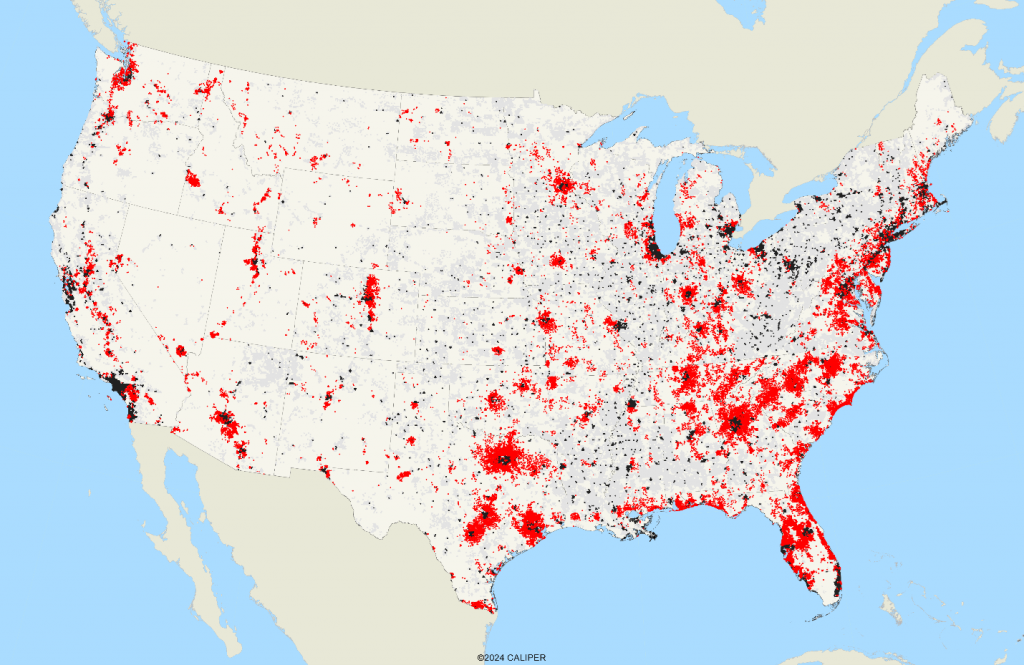


Recent Comments